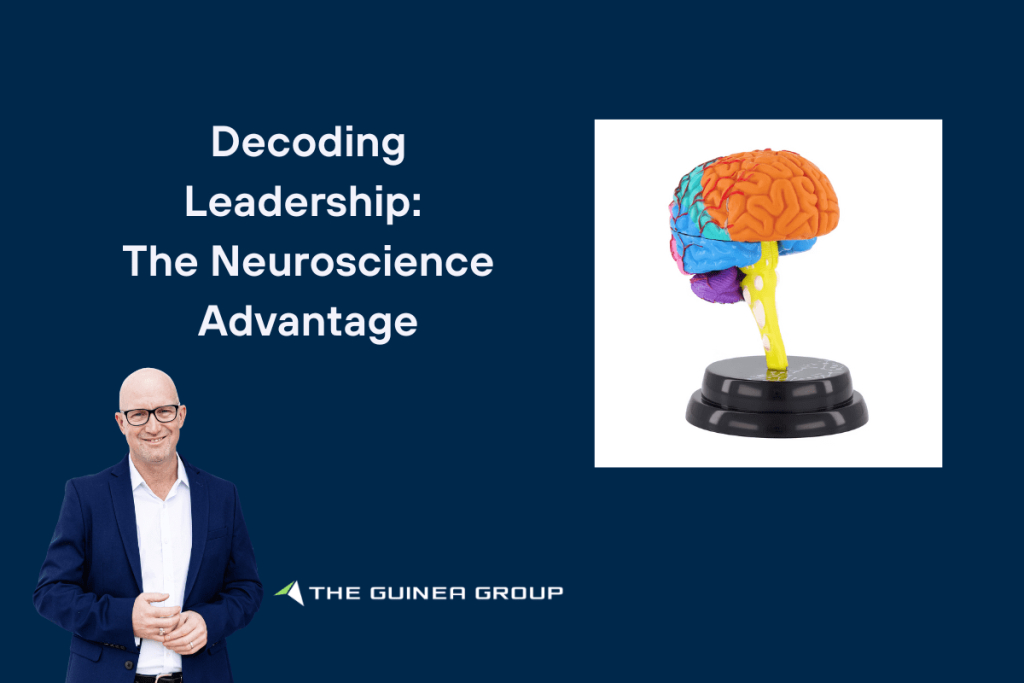Anton Guinea
Entrepreneur, Speaker, bestselling author, and founder of The Guinea Group of Companies. For over 15 years, Anton has helped leaders move their teams to become psychologically safe, physically safe and overall better versions of themselves.

Decoding Leadership: The Neuroscience Advantage

Once upon a time the only science that I really understood was the science of electricity. You see, I was an Electrician (not a great one, but a qualified tradesperson, nevertheless). Until one day, I too close to said electricity and the switchboard blew up in my face, and nearly took my life. Which caused me to think about another type of science.
The science of the brain. The science of why we do what we do. The science of leadership.
It is actually quite intriguing to geek out on leadership, and what is happening from a neurological perspective as you make decisions, interact with others, and manage your motivation and hormones. Here are some interesting facts about the neuroscience of leadership.
1. Neuro-leadership and Decision-Making
Ever wondered what happens in the brain when leaders make decisions? Neuro-leadership explores the neural processes behind effective decision-making. The prefrontal cortex, responsible for complex thinking and decision-making, is at the heart of this.
Leaders who grasp the nuances of neuro-leadership can optimise their decision-making by understanding cognitive biases, enhancing self-awareness, and creating environments that foster innovative thinking. This is not just leadership; it’s leadership with a neuroscientific edge.
2. Social Intelligence and Team Dynamics
Leadership is fundamentally about people, and social intelligence is the neuroscience-backed skill that sets great leaders apart. Mirror neurons, which activate both when we perform an action and when we see someone else perform it, play a crucial role in social intelligence.
Leaders with high social intelligence excel at understanding and navigating the emotions of their team members, fostering a collaborative and supportive work environment. By recognising the power of social cues, leaders can build stronger, more connected teams.
3. Dopamine and Motivation
Motivation is the fuel that drives teams toward success. The neuroscience of motivation, particularly the role of dopamine, sheds light on how leaders can inspire and engage their teams. Dopamine is a neurotransmitter associated with pleasure and reward.
When leaders create goals, celebrate achievements, and provide positive reinforcement, they trigger the release of dopamine in the brain. This not only boosts individual motivation but also contributes to a positive team culture where accomplishments are recognised and celebrated.
Embracing the neuroscience of leadership isn’t just a trend; it’s a strategic advantage.
By incorporating these insights into our leadership practices, we can create environments that stimulate creativity, enhance decision-making, and foster a culture of continuous improvement.
I’d love to hear your thoughts on how neuroscience has influenced your leadership approach or if there are specific neuroscience principles you find particularly impactful.
Here’s to leading with a brainy brilliance!
And please click the image below if you’d like to chat about what leadership means to you.
If you would like to learn more about Anton or The Guinea Group, please click here to book into Anton’s calendar, to:
UPGRADE your Mindset
UPSKILL your Leadership
UPLIFT your Teams
About Anton
Anton has dedicated his working life to helping leaders to upgrade their mindset, upskill their leadership, and uplift their teams! With a focus on helps leaders to better lead under pressure. Anton is an entrepreneur, speaker, consultant, bestselling author and founder of The Guinea Group. Over the past 19 years, Anton has worked with over 175+ global organisations, he has inspired workplace leadership, safety, and cultural change. He’s achieved this by combining his corporate expertise, education (Bachelor of HR and Psychology), and infectious energy levels.
Work With Anton!
Subscribe to our Newsletter
